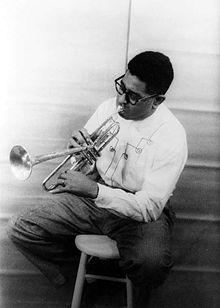Piano Sheets > Dizzy Gillespie Sheet Music > And The Melody StillLingers On (ver. 1) Piano Sheet
And The Melody StillLingers On (ver. 1) by Dizzy Gillespie - Piano Sheets and Free Sheet Music

About the Song
"Night in Tunisia" is a musical composition written by Dizzy Gillespie in 1942 while he was playing with the Earl Hines Band. It has become a jazz standard.
It is also known as "Interlude", under which title it was recorded (with lyrics) by Sarah Vaughan. Gillespie himself called the tune "Night in Tunisia".
"Night in Tunisia", along with "Manteca", was one of the signature pieces of Gillespie's bebop big band, and he also played it with his small groups. One of its most famous performances is Charlie Parker's recording for Dial (Dial even released a fragmentary take of it simply titled "The Famous Alto Break"); it also became closely identified with Art Blakey's Jazz Messengers, who often gave showstopping performances of it with extra percussion from the entire horn section.
On the album A Night at Birdland Vol. 1, Blakey introduces the piece with the (probably apocryphal) story of how he.
Download this sheet!
About the Artist

Random article
How to read sheet music How to read sheet music
Reading piano sheet music is no simple thing. For it first we require to know the individual elements of the composition itself in order to read sheet music. You must make sure that you are familiar with that particular composition's language before you tackle the entire piece.
In order to grasp the intent and nuances of the piece quickly for reading piano sheet music following steps are to be considered:-
1> To start with have a look over entire composition to get the feel of the length and style of the sheet music. This first run through is just to have a quick overview of the composer's work. This will slowly prepare you to read the sheet music.
(More...)
